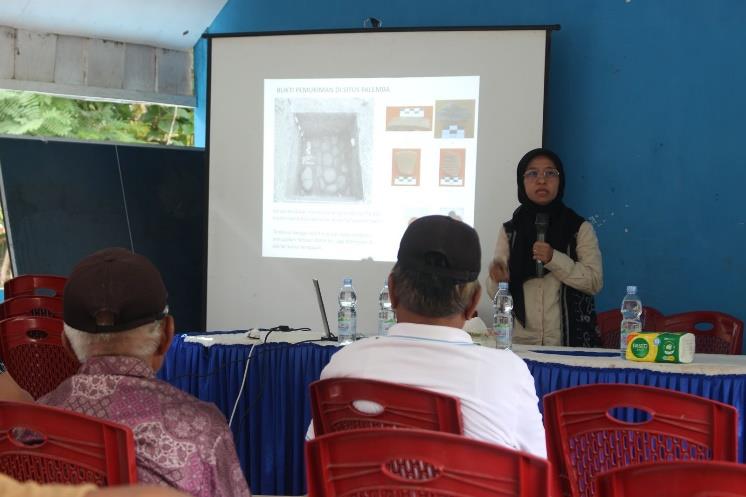
The activity “Socialization of Archaeological Research Results in Kalumpang Sub-district, Mamuju Regency, West Sulawesi” was the final part of delineation activities in preparation for the establishment of the location of ODCB findings into CB. This activity consisted of four presentation sessions and ended with a discussion session. Two presentation materials were the presentation of research results in Kalumpang, especially the latest findings, one material about the condition of Kalumpang’s natural environment and its potential as a “Geoheritage Park”, and one material from the aspect of protection of Suspected Cultural Heritage Objects. The material presented by Dr. Anggraeni, M.A., entitled “Minanga Sipakko (Sitokon) and Palemba Sites Evidence of Cultural Development in Karama Valley, Kalumpang District”. In the question and answer session at the end of the socialization, there were many questions and inputs from the participants. One of the traditional leaders suggested changing the name of the Minanga Sipakko Site to Sitokon Site which is better known by the local community, while another participant who is a teacher suggested that socialization activities could be carried out every year.
Considering that among the participants were teachers and junior high school students, after the socialization event was closed, Dr. Anggraeni, M.A. conducted an interview with one of the teachers and junior high school students to inform them about the book “Kalumpang Pottery Product Design Development Module Based on Archaeological Remains”. The book was prepared to provide an example to revive the enthusiasm of potters in Kalumpang District to produce. The skills still possessed by potters in Lebani Hamlet are threatened with extinction if there is no next generation. Therefore, teachers and students are encouraged to become agents of pottery product design development so that pottery-making skills can be preserved. In this case, the inspiration for the development of ornamental varieties comes from the remains of decorated pottery found in archaeological sites in the Kalumpang District area. The role of teachers and students from Kalumpang is to bridge and ensure that the modules and prototype examples of decorated pottery that have been prepared can really be useful and inspire an increase in the variety of pottery products.
This effort was taken considering that Kalumpang teachers and students are the ones who can continuously provide assistance. Meanwhile, researchers can only occasionally be present to assist and evaluate the results of pottery product development. Teachers and students are also expected to serve as intermediaries between producers and consumers. Without consumers, the productivity of potters would not be maintained and developed.

